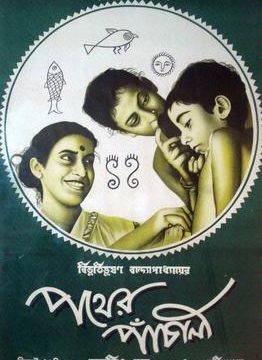Sight & Sound Voyage Entry #20
Placement On Sight & Sound Top 50 Movies List: #42 (tied with Some Like It Hot, Getrud, Pierrot Le Fou, Playtime and Close-Up)
There isn’t much glamor in the way director Satyajit Ray films the living conditions his lead characters in Pather Panchali reside in and that’s a key component of why the movie manages to be so enthralling, it feels like we, the audience, are getting a glimpse into an accurate depiction of a way of life foreign to me and many others but all too familiar for the real-life individuals Pather Panchali takes inspiration from. Satyajit Ray is not looking to gussy up the lives of these human beings to make it more palatable or what have you but rather desires to make an accurate depiction that can stand as a testament to their courage and sacrifices in the face of all the hardships of life.
The family Satyajit Ray focuses on in this story (which he also wrote in addition to directing) is the Roy family, which consists of father Harihar (Kanu Banerjee), mother Sarbajaya (Karuna Bane), eldest daughter Durga (Uma Dasgupta) and small boy Apu (Subir Banerjee). These four live together in a dilapidated home which offers all kinds of problems while Harihar’s employment woes offer similar hardship to the family. Pather Panchali follows a short period of time in the families life as they try to hope for better circumstances, with Harihar leaving home for an extended period of time for employment reasons while Sarbajaya and her children hold down the fort back at home amidst all kinds of trials and tribulations.
Pather Panchali very much feels faithful to the experience of just watching actual individuals like the various members of the Roy family go about their days and try to live their lives. The kids are normal children who desire games and sweets (the latter of which provides some grief to their parent’s wallets) while the mother is trying to make ends meet while her husband is away and the presence of erratic cousin Indir Thakrun (Chunibala Devi) only complicates matters further for the rest of them. All of the various problems they face are intimate and small-scale in nature (well, most of them anyway, there’s a fatal disease Durga becomes stricken with in the third act that’s far more pressing than their ordinary quandaries) but Satyajit Ray makes them feel like they’re just as powerful as watching the entire world explode at once.
His writing, merged with the strong performances by the various actors and the filming style of cinematographer Subrata Mitra, combine to ensure that Pather Panchali has this aesthetic that constantly emanates realism. For instance, the way the various dynamics between differing family members is so different (the way Sarbajaya interacts with Durga is quite different from the way she interacts with Apu, for example) is something incorporated into the movie in an incredibly subdued manner but it makes all the difference in the world in terms of achieving a realistic visual depiction of the verbal interactions between family members. Authenticity is the name of the game here and it’s a game Pather Panchali constantly wins at.
What’s also helpful in the movies successful attempt at depicting the everyday circumstances of a family unit is that not one family member hogs the spotlight. Apu may get his name in the trilogy of films Pather Panchali belongs to, but he’s far from the lead character and the same goes for Durga or Sarbajaya. They all get scenes either centered on them or hinging on their actions but none of them emerge as the true blue lead character of the entire piece, as it should be. There’s not really a “main character” equivalent in typical families and Pather Panchali constantly keeps that fact in mind as it refuses to let any singular character overshadow the entire piece.
Satyajit Ray does an incredible job in his screenwriting making that ensemble cast work, ditto for the actors who all lend this realistic presence to their characters that makes you immediately buy both the roles they play in the film and their separate personalities. All of these virtues ensured that I was quickly absorbed into the grounded world Pather Panchali depicts, a world marked by constant struggles and sorrow with occasional specks of joy found in the little things, like watching a train go by. Those are the little things that make life worthwhile and great movies like Pather Panchali are also most certainly a nice facet of living too.

